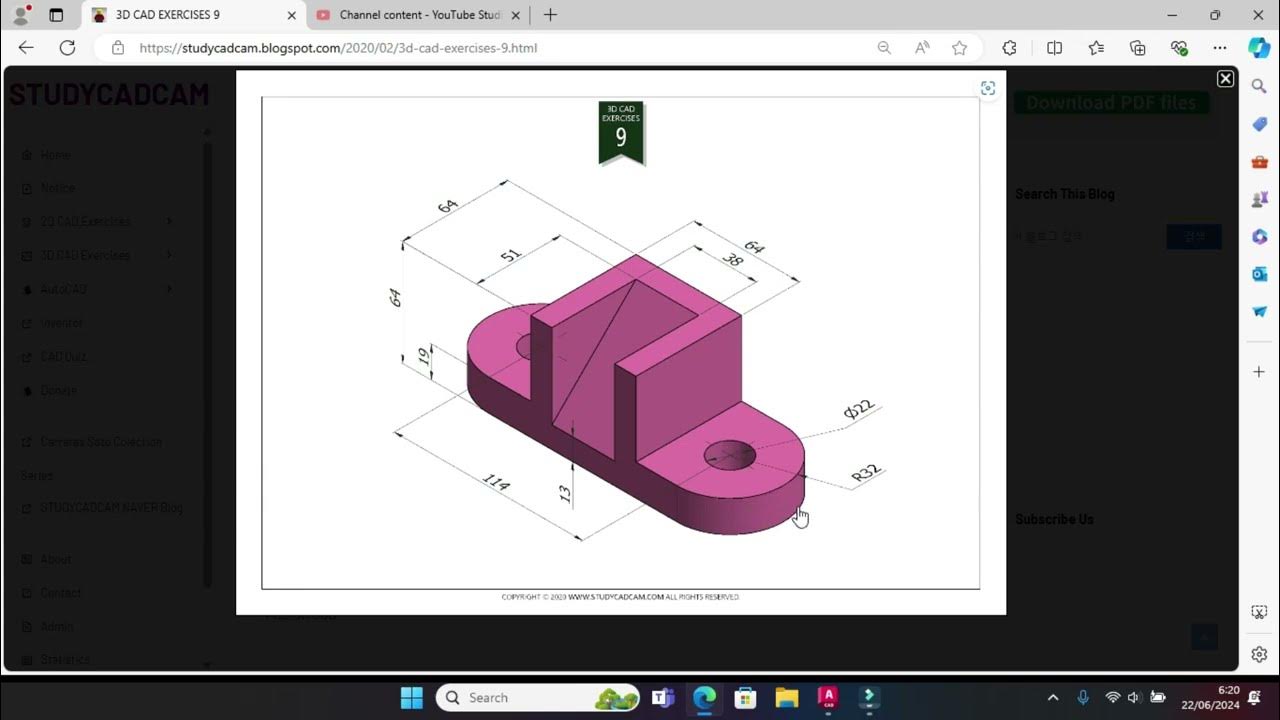Como desenhar: Perspectiva Paralela - Básica
Summary
TLDRIn this tutorial, the speaker delves into the concept of parallel perspective in drawing and 3D design. The video explains how to apply parallel perspective using various angles, including the X, Y, and Z axes, to create depth and structure in sketches. Emphasizing the importance of the horizon line and the vanishing point, the speaker covers the role of perspective in creating realistic and organized drawings. Practical tips, such as using rulers for accuracy and visualizing objects in different planes, help learners understand the foundational principles of perspective in design and art. The video encourages viewers to practice and refine their skills.
Takeaways
- 😀 Understanding parallel perspective requires recognizing the role of the vanishing point and how lines converge in relation to it.
- 😀 In parallel perspective, you can use multiple vanishing points depending on the context without losing the parallel nature of the lines.
- 😀 The 'Z' axis (depth) is defined by the vanishing point in parallel perspective, with lines either in vertical or horizontal directions (X and Y) having fixed angles.
- 😀 The horizontal (X) lines are typically drawn at 0 degrees, while vertical (Y) lines are at 90 degrees when using parallel perspective.
- 😀 The concept of horizon line is critical in perspective, representing the viewer's eye level and determining how objects are positioned relative to the viewer.
- 😀 The closer an object is to the observer, the larger it appears, while distant objects appear smaller, which is essential for creating depth in drawings.
- 😀 The vanishing point typically resides on the horizon line and helps align lines to create depth, especially when multiple objects are drawn.
- 😀 When drawing, it's helpful to place objects closer first and then progress to objects further back, which aids in visualizing depth.
- 😀 Perspective distortion occurs depending on the lens or camera used, influencing how objects appear in terms of size and depth.
- 😀 To perceive perspective effectively, try closing one eye; this allows the viewer to focus on a single point of view, mimicking the effect of a single-lens perspective.
Q & A
What is parallel perspective in drawing?
-Parallel perspective is a method used to create depth and dimension in a drawing by using a single point of escape for lines that are parallel to each other. The lines maintain consistent angles and give the illusion of depth in a 2D space.
How do you use the Z axis in parallel perspective?
-The Z axis represents depth in parallel perspective. Lines along the Z axis will converge at a single point of escape, which defines the depth and distance of objects within the scene.
What is the role of the horizon line in perspective drawing?
-The horizon line represents the viewer's eye level in a perspective drawing. It plays a crucial role in determining where the point of escape is located and how objects above or below this line will appear relative to the viewer's perspective.
What is the difference between using one and two points of escape in perspective?
-In one-point perspective, all lines converge towards a single point of escape, which is ideal for objects facing directly towards the viewer. In two-point perspective, there are two points of escape, used for objects that are angled relative to the viewer.
How do you create depth in a drawing using multiple objects?
-To create depth, you should arrange objects from the closest to the farthest, making sure that the lines of their structure (like walls, edges, etc.) follow the same points of escape and adhere to the principles of perspective.
What is the impact of using different camera lenses on perspective?
-The choice of camera lens affects the perception of perspective. A wide-angle lens distorts perspective, making objects appear larger and exaggerating depth, while a telephoto lens compresses perspective, reducing depth distortion.
How does our eyes' binocular vision affect our perception of perspective?
-Human eyes work together to perceive depth and distance through binocular vision, which helps us understand 3D space. However, closing one eye alters this perception and reveals the effect of perspective more clearly, as it removes the depth cues that binocular vision provides.
Why is the concept of 'planes' important in perspective drawing?
-Understanding planes in perspective allows you to properly position and size objects in a scene. Objects closer to the viewer should appear larger and follow the perspective lines accurately, while objects further away will appear smaller, creating a sense of depth.
What is the significance of the point of escape in parallel perspective?
-The point of escape is crucial because it determines how all parallel lines will converge in a scene. This point helps maintain consistency in perspective, ensuring that all objects in the scene appear to follow the same spatial rules.
How can the placement of the point of escape alter the perspective?
-The placement of the point of escape affects the viewer's perception of depth and angle. A higher point of escape will make objects appear to tilt upward, while a lower point of escape can make objects appear to tilt downward. Moving the point horizontally alters the viewer's point of view within the scene.
Outlines

This section is available to paid users only. Please upgrade to access this part.
Upgrade NowMindmap

This section is available to paid users only. Please upgrade to access this part.
Upgrade NowKeywords

This section is available to paid users only. Please upgrade to access this part.
Upgrade NowHighlights

This section is available to paid users only. Please upgrade to access this part.
Upgrade NowTranscripts

This section is available to paid users only. Please upgrade to access this part.
Upgrade NowBrowse More Related Video
5.0 / 5 (0 votes)





